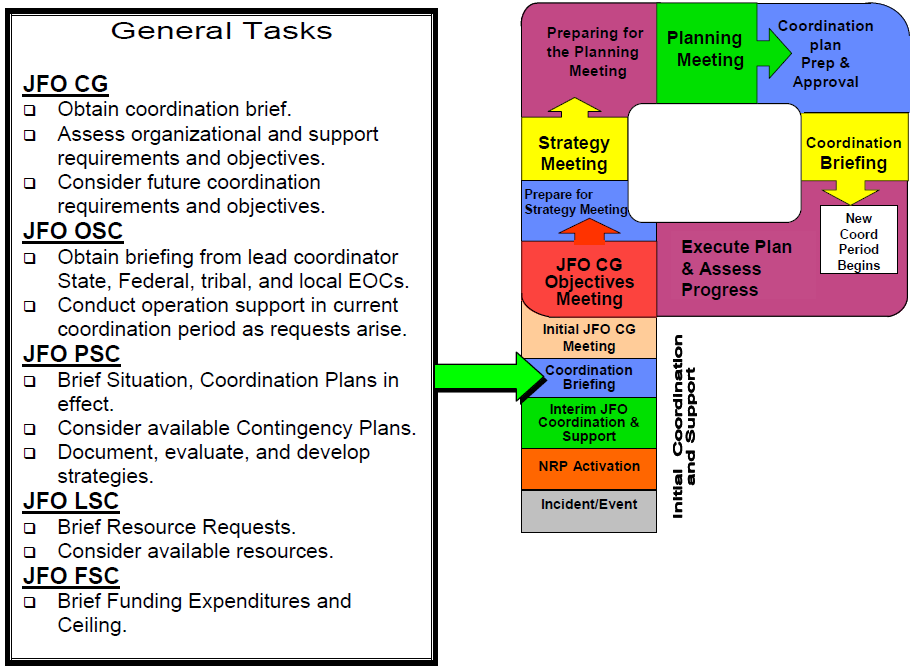 INTERAGENCY INTEGRATED SOP APPENDIXES AND ANNEXES
INTERAGENCY INTEGRATED SOP APPENDIXES AND ANNEXES
- Version 7.1
- 185 pages
- For Official Use Only
- September 12, 2005
Annex A: Roles and Responsibilities
1.0 Regional Responsibilities
1.1 JFO Developmental Organizations.
To facilitate the development of future JFOs and other DHS facilities for each high-threat or regional area, a JFO Development Team (DT) will be established. This team will be cochaired by the appropriate DHS/FEMA regional office, DHS/USSS field office, and/or FBI field office. Membership of the team will include all DHS field elements within the defined urban threat area or regional area. DHS/FEMA will coordinate general oversight and guidance throughout the process, ensuring that the years of experience and existing assets utilized in the development of DFOs are carefully integrated into the JFO developmental process. The Under Secretary of Preparedness will assign organizational responsibility to the appropriate DHS/FEMA elements to ensure oversight of the process.
1.2 Regional JFO Development Team Taskings
1.2.1 Develop a JFO Strategy consistent with:
• JFO SOP
• NSSE requirements
• Threat environment
• Demographics
• Existing political structure
• Level of local and State readiness and operational systems
• Existing regional Federal structure1.2.2 Develop JFO staffing plans, consistent with the JFO SOP, supporting all
organizational elements of a fully functional JFO for the specific regional area. These
plans should identify the organizations or representatives from the appropriate DHS
elements needed to maintain the JFO readiness posture once established for each region
or urban threat area.1.2.3 Develop a JFO IMP. In addition to pre-identification of facilities, each DT
should develop a JFO Immediate Identification Plan (IMP) to support any activation
resulting from a threat, actual incident, or NSSE. This plan should be
activated/implemented in the event of a WMD incident and in the absence of an available
pre-selected site. It would provide a critical action plan that provides Federal, State,
local, and private-sector contacts with those organizations that have previously agreed to
support the accelerated development of a JFO. The general sizing requirements based on
the incident type, asset, and communication requirements should also be included.…


